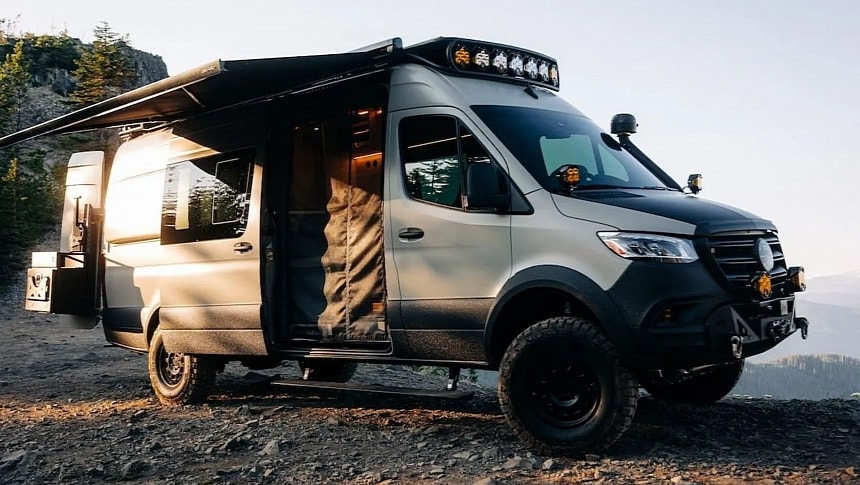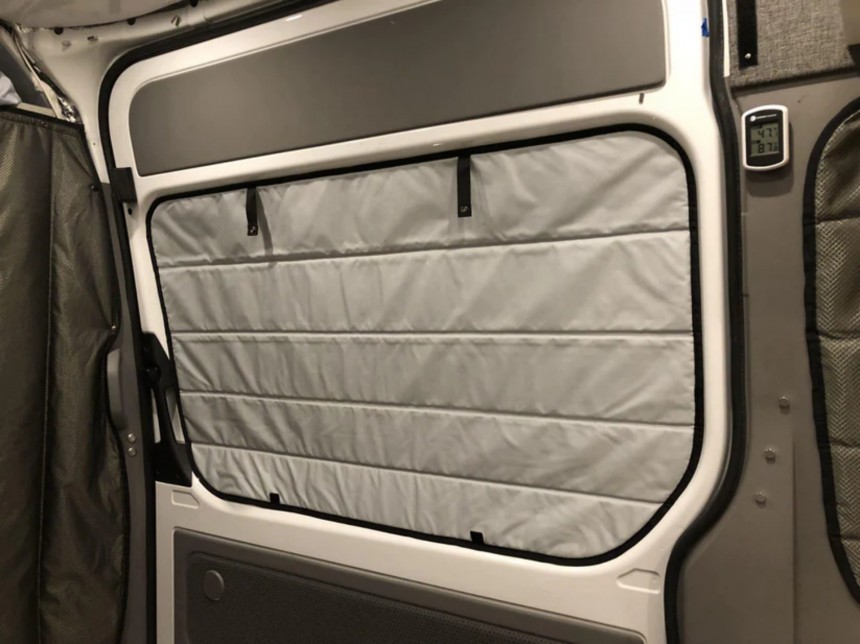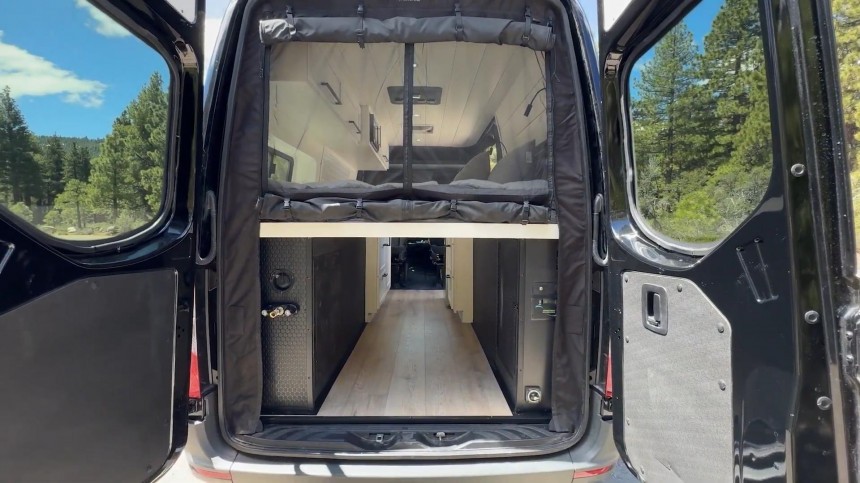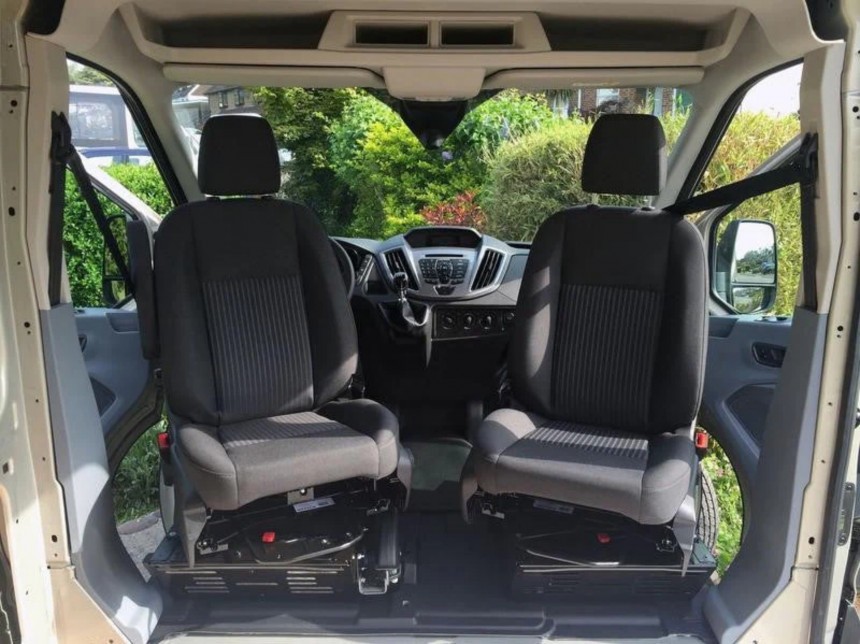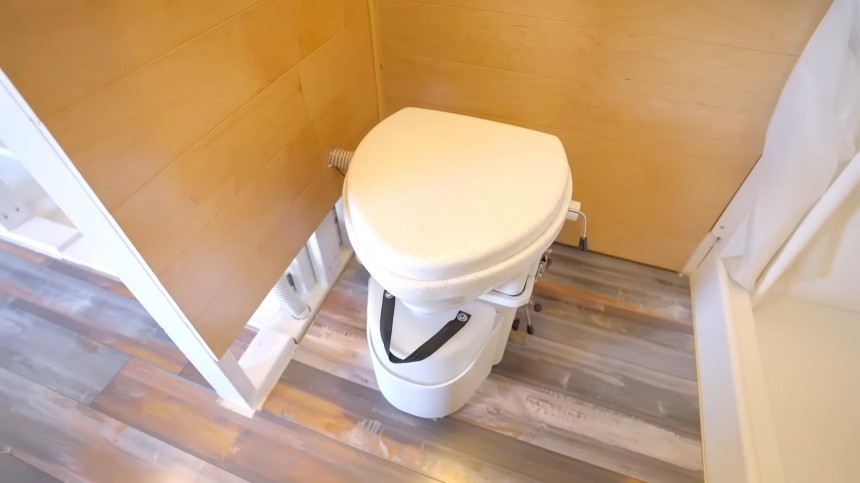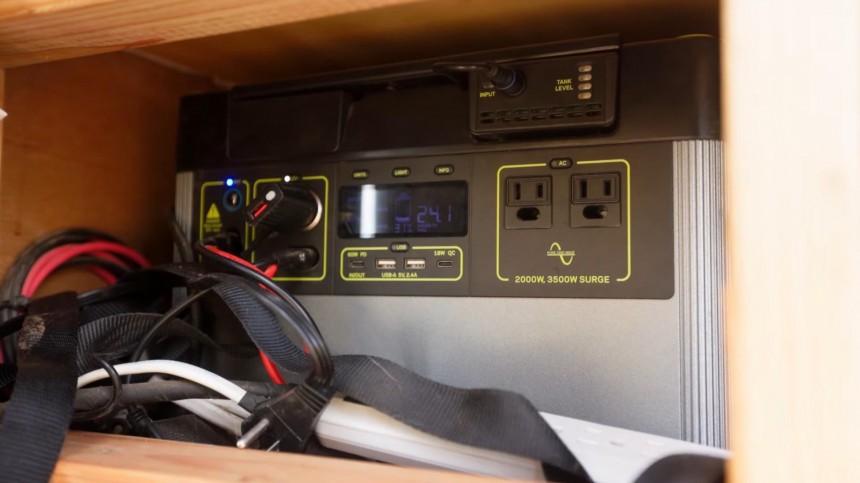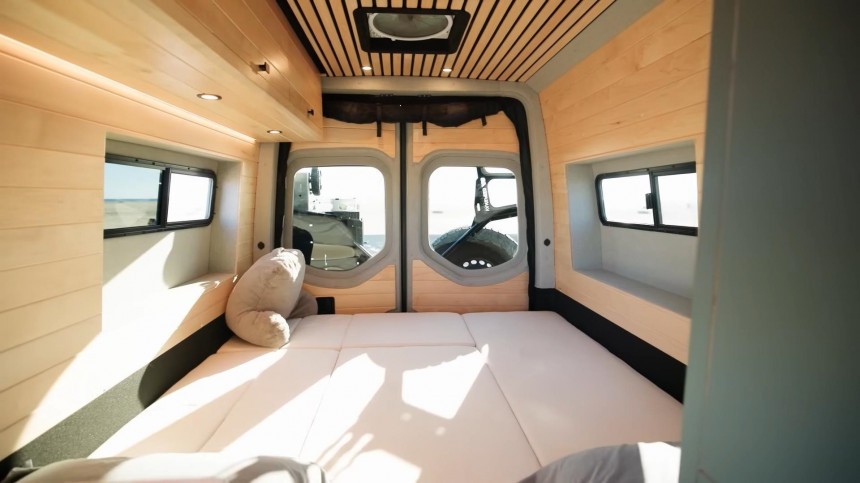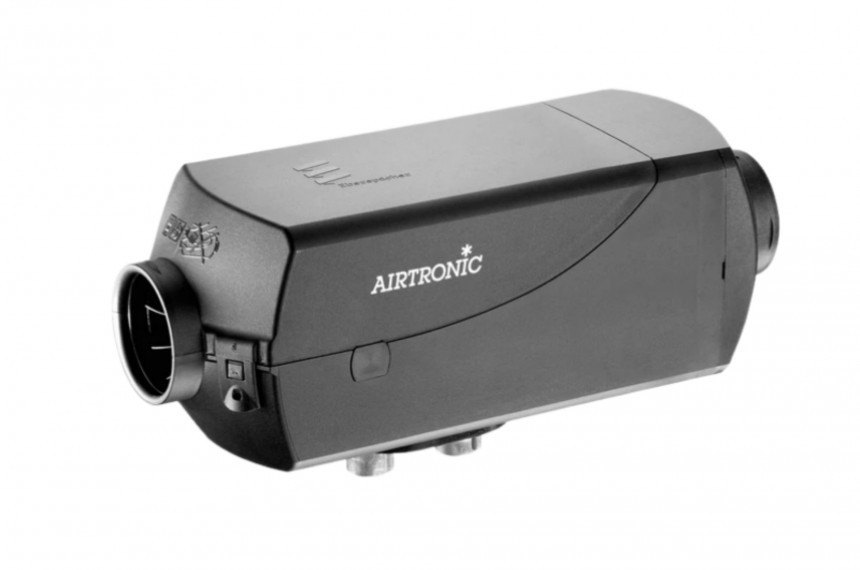You can choose from countless accessories to install on your camper van. Today, I will focus on the ones meant for your rig's interior. Specifically, I'll discuss ten items that will significantly improve your van life experiences.
What makes a van a "camper van" is the ability to travel and sleep inside it. However, it's one thing to have a no-frills rig with a mattress and not much more inside, but another to have a fully equipped mobile home that ensures you have almost all the comforts of a conventional home. Needless to say, we all prefer having the latter option.
So, let's go through what I think are ten excellent upgrades you can make to your camper van's interior. By the way, I'm discussing only interior accessories because I already wrote an article a week ago about ten game-changing exterior mods for your camper van.
Most people prefer having as many windows as possible on their camper vans to ensure the living space gets plenty of natural light and is well-ventilated. However, windows come with two major drawbacks: lack of privacy and heat transfer.
Even if you have a standard cargo van with no additional windows, you still need to cover the windshield and the two front windows. Sure, in this specific case, you can use a curtain to block off sight, but that doesn't prevent heat transfer.
That's why my suggestion is that you consider insulated window covers regardless of how many windows you have. High-quality ones aren't cheap, but they will make a major difference in insulation. Moreover, you can use insulated covers for windows, skylights, and ceiling fans.
A well-made cover must match the window contour, preventing light not only from coming in and disturbing your rest but also from going out, which can reveal someone is living inside the vehicle in places you wouldn't want that.
There are two main ways to get your hands on window covers: make them or buy them. The first option might not sound that challenging, but you might be surprised.
You can use fabrics like Low-E and Thinsulate for insulation and cover them with standard fabric. What's more, it's ideal to integrate magnets into the covers, ensuring they will stick properly to the window.
If this DIY process sounds too demanding and time-consuming, or you'd rather spend the time on other parts of your camper van, buying the window covers is much easier.
You'll find plenty of options, but the ones I recommend are from Van Made Gear. The company's covers attach magnetically and are insulated with Low-E. Furthermore, the products are handmade in the United States.
One accessory I haven't seen on many camper vans I've written about is a bug screen. I don't know about you, but I hate having insects (especially mosquitoes) buzz in my ears while trying to fall asleep.
Well, a bug screen allows your living space to properly ventilate while preventing insects from entering. What's more, you can still take in the beautiful surrounding views through the screen.
The most common places for installing bug screens are the main sliding door and the rear. Most bug screens allow for multiple setups. For instance, you can roll them all the way up for places where insects aren't an issue.
When they're rolled down, you can choose to leave them open or closed. Open means you can look through them, while closed means you can zip them to block off light. The latter is the perfect setup for when you want to sleep with the doors open.
As with window covers, the same goes for bug screens – you can build them yourself or get them off the shelf. Regarding the latter option, there are many budget-friendly options available. However, if budget isn't that big of an issue, I recommend taking a look at professional bug screens, such as the ones from The Bug Wall.
The Bug Wall's products have a perfect fit and come with magnetic doorways, making it easy for you to hop on and out of the vehicle.
It doesn't take lots of traveling and living in a camper van to figure out that swivel seats can play an essential role in mobile homes. They're something that's used every day, both when driving and when you're parked somewhere.
Swivel seats are a fantastic way to improve the comfort of your camper van by creating extra living space. Newer van models offer swivel seats as a factory option, but if you've got a van with normal seats, worry not; you can get an aftermarket swivel base.
There are two main factors to keep in mind when choosing swivel seats: height and weight. In addition, you want them not to squeak or wobble/rattle.
Naturally, a swivel base will increase the height of your seat, which then impacts the driving posture and ergonomics. Getting them wrong might lead to short-term discomfort and long-term postural distortions.
Weight is also an important factor. A swivel base's weight might seem insignificant, but you have to take it into account, as weight inside a camper van can quickly add up.
The installation of a swivel base differs depending on the product you choose, so I won't go into detail here. Scopema, Amazing Auto, and SwivelsRus offer some of the most popular bases.
Some people are deterred from moving into a tiny home on wheels due to the presumed lack of hygiene. Well, you can integrate a bathroom in your camper van. For vehicles too compact to fit a bathroom, you can add an outdoor shower and carry a toilet onboard.
Many adventurers can make do without an indoor shower, but most, understandably, want to have some sort of toilet. Choosing a toilet might sound like an overwhelming decision, but if you've done some research, you'll surely find something to fit your needs.
Here's a short guide on camper van toilets. There are five main types: traditional toilets, bucket toilets, cassette toilets, composting toilets, and incinerating toilets.
The traditional toilet is similar to the porcelain ones in conventional homes. It's installed over a holding tank and requires water to operate, as well as a black water tank. Due to these necessary components and the complexity of the system, you won't see many on camper vans.
Next, we have the bucket toilet, which is exactly what the name suggests. It's the cheapest but also the most inconvenient option, as it needs to be emptied after each use to prevent smells. It's good for emergencies and people with a very limited budget, but I wouldn't recommend it otherwise.
Let's move on to some better options, starting with the cassette toilet. It's relatively affordable, portable, and doesn't take up much space. On the other hand, it needs to be emptied frequently, and its operation involves the use of harsh chemicals. One good option is the Thetford Porta Potti.
If you're familiar with camper vans, you might know that composting toilets are a popular choice. Composting toilets separate your business into solids and liquids. Liquids will need to be emptied every few days, but the solids container can last 60-80 uses before it needs to be dumped. The best part is that the solids don't smell because you'll add peat moss or coconut coir to the container, turning them into dirt.
A composting toilet will feel like an actual toilet. What's more, it's eco-friendly and doesn't smell. However, they're very expensive, not portable, and take up a bit more space than other toilets on this list. The go-to option for many van dwellers is the Nature's Head composting toilet.
If you thought composting toilets were expensive, wait till you see the price tag for an incinerating one. Long story short, incinerating toilets incinerate waste at high temperatures. All that's left is a minimal amount of ash, which is sterile, meaning you don't have to dump it at designated spots.
Cleaning it is easy, and no smells will come from it in your camper van, although you'll need to install a chimney. The Cinderella incinerating toilet is a good option.
You can't live and travel in a camper van without a power source. Some people install dedicated systems with big batteries, inverters, solar power, and more. However, a portable power station is a more budget-friendly solution for simpler camper vans.
A portable power station is an efficient and durable battery that typically comes with built-in inverters, controllers, and other components. It can store and deliver significant amounts of energy, making it perfect for campers.
There is no perfect, one-size-fits-all solution when it comes to portable power stations. Your needs will determine your choice. Here are two things you should consider before you purchase one.
First, what size inverter do you need? The size of the inverter will determine the maximum power it can provide at any one time. Calculate some of the appliances and gadgets you'll often use on your adventures to determine the maximum power you need.
Second, what size battery do you need? The battery capacity tells you how many hours the battery can offer a certain number of watts, given in Watt-hours (Wh). You can calculate how many Wh you'll use daily by adding up the usage from each item you use. This will help you choose your power station based on how many days you want to last without recharging.
Many brands offer excellent power stations, such as Bluetti, EcoFlow, and Goal Zero. Make sure you calculate what I mentioned above and check whether you have enough plugs on the station.
No matter how big or small your camper van is, it still needs ventilation. Otherwise, condensation, humidity, odor, and pollutants can build up, leading to other issues. Moreover, ventilation brings in clean, oxygen-rich air and regulates the van's internal temperature.
A roof vent with an in-built fan or a dome wind-powered vent can push air around even with little wind outside. Although you can passively circulate air by opening windows, vent fans will speed up the process, especially if you create a circulatory system by pairing two units.
Many camper van owners add two ceiling fans, one at the front and one at the rear. One can pull fresh air while the other can push hot air, quickly ventilating the interior space. Another setup you could do is add a louvered air vent in the wall close to the floor and a roof fan.
By the way, the efficiency of active ventilation systems is measured in cubic meters per hour or minute (m3/h or m3/min) - it refers to the volume flow rate of stale air the vent can pull out. The interior space needs to be sealed for a fan to work most effectively.
The go-top option here is, by far, Maxxair. The company has a range of five products catering to different RV ventilation needs.
Unless you're traveling only in environments with constant high temperatures, you should consider installing a heating solution in your camper van. The most popular one (for good reasons) is the diesel heater.
So, what makes diesel heaters so popular? They're efficient, reliable, and cost-effective, although they can have higher upfront costs compared to LPG/propane or electric heaters. However, electric heaters use a ton of power, so they're a mostly unsustainable solution.
Diesel heaters are better than LPG/propane heaters because diesel is easier to find, safer, more efficient, and burns at a higher BTU than LPG. However, they're quite loud and don't operate well at altitude.
Needless to say, it's critical to ensure the correct installation of your diesel heater. Otherwise, you risk fire or carbon monoxide poisoning.
Three types of diesel heating systems are available: air, air and water, and hydronic. To keep it short, an air heater is the most common type of diesel heater, simply blowing air. There are many great brands, such as Planar, Espar, and Webasto. However, many adventurers with low budgets opt for Chinese diesel heaters, which have lower build quality and can be more prone to malfunction, but some people swear by them.
An air and water heater acts as both a water heater and a blow heater. One popular option here is the Truma Combi.
Finally, a hydronic heater is the most complicated yet most modern type of diesel heater. It works just like an air and water heater but has one ace up its sleeve: it uses excess heat from the engine once the van has stopped as a fuel source.
By the way, hydronic heating is the most efficient way to heat under-floor heating in your van. One of the most renowned hydronic heaters is manufactured by Aqua-Hot.
So, let's go through what I think are ten excellent upgrades you can make to your camper van's interior. By the way, I'm discussing only interior accessories because I already wrote an article a week ago about ten game-changing exterior mods for your camper van.
1. Window Shades
Even if you have a standard cargo van with no additional windows, you still need to cover the windshield and the two front windows. Sure, in this specific case, you can use a curtain to block off sight, but that doesn't prevent heat transfer.
That's why my suggestion is that you consider insulated window covers regardless of how many windows you have. High-quality ones aren't cheap, but they will make a major difference in insulation. Moreover, you can use insulated covers for windows, skylights, and ceiling fans.
A well-made cover must match the window contour, preventing light not only from coming in and disturbing your rest but also from going out, which can reveal someone is living inside the vehicle in places you wouldn't want that.
There are two main ways to get your hands on window covers: make them or buy them. The first option might not sound that challenging, but you might be surprised.
You can use fabrics like Low-E and Thinsulate for insulation and cover them with standard fabric. What's more, it's ideal to integrate magnets into the covers, ensuring they will stick properly to the window.
If this DIY process sounds too demanding and time-consuming, or you'd rather spend the time on other parts of your camper van, buying the window covers is much easier.
You'll find plenty of options, but the ones I recommend are from Van Made Gear. The company's covers attach magnetically and are insulated with Low-E. Furthermore, the products are handmade in the United States.
2. Bug Screens
Well, a bug screen allows your living space to properly ventilate while preventing insects from entering. What's more, you can still take in the beautiful surrounding views through the screen.
The most common places for installing bug screens are the main sliding door and the rear. Most bug screens allow for multiple setups. For instance, you can roll them all the way up for places where insects aren't an issue.
When they're rolled down, you can choose to leave them open or closed. Open means you can look through them, while closed means you can zip them to block off light. The latter is the perfect setup for when you want to sleep with the doors open.
As with window covers, the same goes for bug screens – you can build them yourself or get them off the shelf. Regarding the latter option, there are many budget-friendly options available. However, if budget isn't that big of an issue, I recommend taking a look at professional bug screens, such as the ones from The Bug Wall.
The Bug Wall's products have a perfect fit and come with magnetic doorways, making it easy for you to hop on and out of the vehicle.
3. Swivel Seats
Swivel seats are a fantastic way to improve the comfort of your camper van by creating extra living space. Newer van models offer swivel seats as a factory option, but if you've got a van with normal seats, worry not; you can get an aftermarket swivel base.
There are two main factors to keep in mind when choosing swivel seats: height and weight. In addition, you want them not to squeak or wobble/rattle.
Naturally, a swivel base will increase the height of your seat, which then impacts the driving posture and ergonomics. Getting them wrong might lead to short-term discomfort and long-term postural distortions.
Weight is also an important factor. A swivel base's weight might seem insignificant, but you have to take it into account, as weight inside a camper van can quickly add up.
The installation of a swivel base differs depending on the product you choose, so I won't go into detail here. Scopema, Amazing Auto, and SwivelsRus offer some of the most popular bases.
4. Toilets
Many adventurers can make do without an indoor shower, but most, understandably, want to have some sort of toilet. Choosing a toilet might sound like an overwhelming decision, but if you've done some research, you'll surely find something to fit your needs.
Here's a short guide on camper van toilets. There are five main types: traditional toilets, bucket toilets, cassette toilets, composting toilets, and incinerating toilets.
The traditional toilet is similar to the porcelain ones in conventional homes. It's installed over a holding tank and requires water to operate, as well as a black water tank. Due to these necessary components and the complexity of the system, you won't see many on camper vans.
Next, we have the bucket toilet, which is exactly what the name suggests. It's the cheapest but also the most inconvenient option, as it needs to be emptied after each use to prevent smells. It's good for emergencies and people with a very limited budget, but I wouldn't recommend it otherwise.
Let's move on to some better options, starting with the cassette toilet. It's relatively affordable, portable, and doesn't take up much space. On the other hand, it needs to be emptied frequently, and its operation involves the use of harsh chemicals. One good option is the Thetford Porta Potti.
If you're familiar with camper vans, you might know that composting toilets are a popular choice. Composting toilets separate your business into solids and liquids. Liquids will need to be emptied every few days, but the solids container can last 60-80 uses before it needs to be dumped. The best part is that the solids don't smell because you'll add peat moss or coconut coir to the container, turning them into dirt.
A composting toilet will feel like an actual toilet. What's more, it's eco-friendly and doesn't smell. However, they're very expensive, not portable, and take up a bit more space than other toilets on this list. The go-to option for many van dwellers is the Nature's Head composting toilet.
If you thought composting toilets were expensive, wait till you see the price tag for an incinerating one. Long story short, incinerating toilets incinerate waste at high temperatures. All that's left is a minimal amount of ash, which is sterile, meaning you don't have to dump it at designated spots.
Cleaning it is easy, and no smells will come from it in your camper van, although you'll need to install a chimney. The Cinderella incinerating toilet is a good option.
5. Portable Power Station
A portable power station is an efficient and durable battery that typically comes with built-in inverters, controllers, and other components. It can store and deliver significant amounts of energy, making it perfect for campers.
There is no perfect, one-size-fits-all solution when it comes to portable power stations. Your needs will determine your choice. Here are two things you should consider before you purchase one.
First, what size inverter do you need? The size of the inverter will determine the maximum power it can provide at any one time. Calculate some of the appliances and gadgets you'll often use on your adventures to determine the maximum power you need.
Second, what size battery do you need? The battery capacity tells you how many hours the battery can offer a certain number of watts, given in Watt-hours (Wh). You can calculate how many Wh you'll use daily by adding up the usage from each item you use. This will help you choose your power station based on how many days you want to last without recharging.
Many brands offer excellent power stations, such as Bluetti, EcoFlow, and Goal Zero. Make sure you calculate what I mentioned above and check whether you have enough plugs on the station.
6. Roof Vents
A roof vent with an in-built fan or a dome wind-powered vent can push air around even with little wind outside. Although you can passively circulate air by opening windows, vent fans will speed up the process, especially if you create a circulatory system by pairing two units.
Many camper van owners add two ceiling fans, one at the front and one at the rear. One can pull fresh air while the other can push hot air, quickly ventilating the interior space. Another setup you could do is add a louvered air vent in the wall close to the floor and a roof fan.
By the way, the efficiency of active ventilation systems is measured in cubic meters per hour or minute (m3/h or m3/min) - it refers to the volume flow rate of stale air the vent can pull out. The interior space needs to be sealed for a fan to work most effectively.
The go-top option here is, by far, Maxxair. The company has a range of five products catering to different RV ventilation needs.
7. Diesel Heaters
So, what makes diesel heaters so popular? They're efficient, reliable, and cost-effective, although they can have higher upfront costs compared to LPG/propane or electric heaters. However, electric heaters use a ton of power, so they're a mostly unsustainable solution.
Diesel heaters are better than LPG/propane heaters because diesel is easier to find, safer, more efficient, and burns at a higher BTU than LPG. However, they're quite loud and don't operate well at altitude.
Needless to say, it's critical to ensure the correct installation of your diesel heater. Otherwise, you risk fire or carbon monoxide poisoning.
Three types of diesel heating systems are available: air, air and water, and hydronic. To keep it short, an air heater is the most common type of diesel heater, simply blowing air. There are many great brands, such as Planar, Espar, and Webasto. However, many adventurers with low budgets opt for Chinese diesel heaters, which have lower build quality and can be more prone to malfunction, but some people swear by them.
An air and water heater acts as both a water heater and a blow heater. One popular option here is the Truma Combi.
Finally, a hydronic heater is the most complicated yet most modern type of diesel heater. It works just like an air and water heater but has one ace up its sleeve: it uses excess heat from the engine once the van has stopped as a fuel source.
By the way, hydronic heating is the most efficient way to heat under-floor heating in your van. One of the most renowned hydronic heaters is manufactured by Aqua-Hot.
